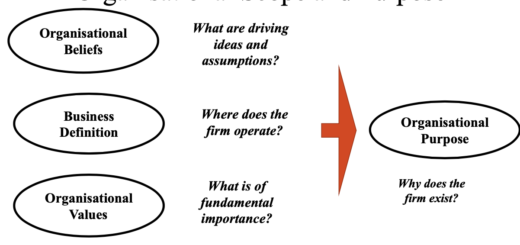The Balanced Scorecard
A Balanced Scorecard (BSC) is a strategic management tool that helps organizations to measure and monitor their performance across multiple perspectives or dimensions. It was developed by Drs. Robert Kaplan and David Norton in the early 1990s as a way to measure and align an organization’s strategic objectives and goals.
It provides a comprehensive framework for assessing an organization’s performance from multiple perspectives, including financial, customer, internal processes, and learning and growth.

The balanced scorecard includes the following four perspectives:
- Financial perspective: This perspective measures the organization’s financial performance, such as revenue growth, profitability, return on investment, and cost management.
- Customer perspective: This perspective measures the organization’s success in meeting customer needs and expectations. It includes metrics such as customer satisfaction, customer retention, and market share.
- Internal processes perspective: This perspective measures the organization’s internal processes and operational efficiency. It includes metrics such as cycle time, quality, and productivity.
- Learning and growth perspective: This perspective measures the organization’s ability to innovate, learn, and grow. It includes metrics such as employee satisfaction, employee retention, and training and development.
By using the balanced scorecard, organizations can track their progress toward achieving their strategic goals and identify areas that require improvement. It helps organizations to align their resources and activities with their strategy and communicate their progress to stakeholders.
The balanced scorecard also encourages a long-term view of organizational performance by measuring both financial and non-financial metrics. This helps to ensure that the organization is not just focused on short-term financial results, but also on building sustainable success over time.
In summary, a balanced scorecard is a powerful tool for measuring the impact of an organization’s strategy. It provides a comprehensive framework for assessing performance from multiple perspectives and encourages a long-term view of organizational success.
Step of Developing a single KPI
Developing a single KPI (Key Performance Indicator) can help a business or organization measure its progress and performance towards achieving its goals. Here are the steps to develop a single KPI:
- Define your business goal: Start by defining the business goal that you want to measure. For example, if your goal is to increase sales, then you can develop a KPI to measure the sales performance.
- Identify the metrics: Identify the metrics that are relevant to your business goal. For example, if you want to measure the sales performance, then the relevant metrics can be the number of sales, revenue, profit margin, etc.
- Choose the most important metric: Select the most important metric that will help you measure the progress towards achieving your business goal. For example, if you want to measure the sales performance, then you can choose the number of sales as your KPI.
- Set a target: Set a target for your KPI based on your business goal. The target should be achievable and realistic.
- Track your progress: Track your progress towards achieving your KPI. This can be done by setting up a tracking system that will monitor the performance of your KPI over time.
- Take corrective action: If you find that you are not making progress towards achieving your KPI, take corrective action. This can be done by identifying the root cause of the problem and taking steps to address it.
- Review and adjust: Review your KPI periodically and adjust it if necessary. This can be done based on changes in your business goals, metrics, or targets.
By following these steps, you can develop a single KPI that will help you measure the progress towards achieving your business goal.
Criticisms of the Balanced Scorecard
While the balanced scorecard has been widely adopted and praised as a performance management tool, it is not without its criticisms. Some of the criticisms of Kaplan’s balanced scorecard include:
- Overemphasis on financial measures: Critics argue that the balanced scorecard still places too much emphasis on financial measures, which can lead to neglect of non-financial aspects of the organization’s performance.
- Over-simplification of complex issues: Critics argue that the balanced scorecard’s focus on KPIs can oversimplify complex issues, leading to a narrow view of organizational performance.
- Lack of consistency in implementation: Critics argue that the balanced scorecard’s implementation can vary widely between organizations, leading to inconsistent measurement and evaluation.
- Time-consuming and costly: Critics argue that the balanced scorecard can be time-consuming and costly to implement, requiring significant investment in data collection and analysis.
- Limited focus on external factors: Critics argue that the balanced scorecard’s focus on internal measures can lead to a lack of attention to external factors, such as changes in the market or regulatory environment.
- Disconnect with strategy: Critics argue that the balanced scorecard can sometimes become disconnected from the organization’s strategic goals, leading to the measurement of irrelevant or low-value KPIs.
- Potential for manipulation: Critics argue that the balanced scorecard can be manipulated to achieve desired results, leading to a loss of credibility and trust in the measurement system.
In summary, while the balanced scorecard has been praised as a performance management tool, it is not without its criticisms. These criticisms highlight potential limitations of the approach and emphasize the need for careful consideration of how the balanced scorecard is implemented in practice.





It is perfect time to make some plans for the longer term and it is time to be happy. I’ve learn this publish and if I could I want to counsel you some fascinating things or advice. Maybe you can write next articles relating to this article. I wish to read more things about it!